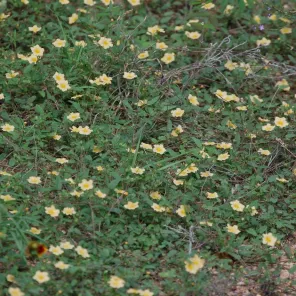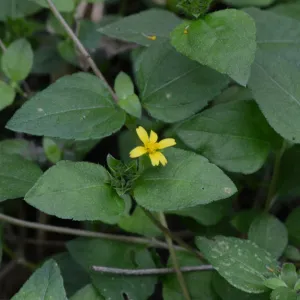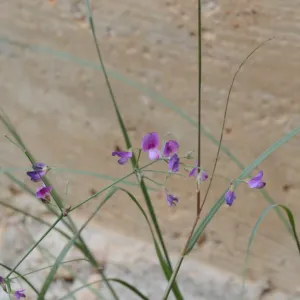By Delmar Cain
by Delmar Cain — Boerne Chapter, Native Plant Society of Texas
Published in the Boerne Star on October 25, 2013
October is a wonderful time of the year, especially when there have been refreshing rains and cooler temperatures have arrived. Those plants that were solid performers during the summer begin to look even better. Plants that appeared to be barely alive in the summer, suddenly act like plants trying to get a staring role in Jack and the Beanstalk.

In May of this year I mentioned spreading fanpetals, a low-growing plant that is found along the edges of some of our local roads. I gathered seeds and spread them on the crushed granite near our driveway. All summer the yellow flowers of this small spreading plant have opened in the sun and provided a light ground cover for our terrace. With the rains the area appears to have a green and yellow carpet.

Another common low-growing plant in our area is straggler daisy (Calyptocarpus vialis). I have yet to go on a nature walk in our area where it is not seen. It grows from Arizona to South Carolina in areas where it receives some shade and will grow in yards as well as in the woodland edges. Those who want a broadleaf-free yard might consider it a pest. But I encourage it to grow wherever it will take root.
Straggler daisy is a perennial with a small yellow flower, which is less than ½ inch in diameter. It blooms from April through November. Its leaves grow opposite on the stem. The plant has stems that sprawl along the ground and may reach 18 inches in length. But the plant does not grow much above 8 inches in height.
I encourage the plant to grow along paths and trails. It is hardy enough to take some foot traffic and it really completes a multi-level terrace, sprawling along and among rock steps. If you are not a persistent weeder, you may already have it growing in your yard. It can occasionally be found at nurseries.

Another plant that I encourage at our place will not be found in nurseries. It is Texas lespedeza or Texas bush-clover (Lespedeza texana), one of the flowering plants in the Pea Family. According to the USDA it is found most often in the Hill Country and in a few other scattered counties in East and in West Texas. Another source, Floristic Synthesis of North America (BONAP), Kartesz, J. T., also shows it growing outside of Texas in one county in Oklahoma.
My dad tried to encourage the growth of lespedeza on our small acreage in East Texas. I am not sure that I ever heard him say which of the 40 species of lespedeza grew on our property. He had a few head of cattle and thought it made good forage. I don’t know if he knew that lespedeza is a legume whose root nodules contain bacteria, which add nitrogen to the soil. That is what I call a cheap fertilizer.
I appreciate the Texas lespedeza because it is a pleasant little surprise that pops up in the summer and early fall. It has a lovely pink and purple flower that catches my eye and causes me to look at the rest of the plant. Texas lespedeza grows in part shade and in full sun in the brown clay soils near the limestone outcrops in our area.
The Wildflower center indicates that it can grow as long as 6 feet. The ones that I see are more in the three feet range. Most of the time it is growing with other small herbs and with grasses. As its stem grows it may climb upon other plants. It is not an aggressive plant that will take over an area. The deer may eat it, but they leave the plants around our house. I would recommend it for a garden plant if I knew where it could be purchased. If you have it already, encourage it and let it improve your soil.
The plants that I have mentioned today are not big bloomers. But each will provide a welcome nectar lunch for butterflies..
